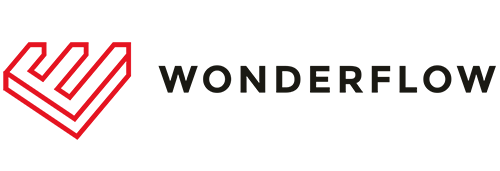When it comes to our furry (feathery, scaly – you name it) friends, brands and consumers alike will do their utmost to satisfy them. In fact, the global pet care market has seen astounding spikes in sales in recent years, particularly during the COVID-19 pandemic.
In this article, we look at the ever-growing and competitive world of pet care. In particular, we examine how the 2020 pandemic affected the market and what global trends have emerged. Industry players can leverage the info to develop better voice of the customer (VoC) programs and maximize their profits.
Read on to learn more!
Outlook on the Pet Care Industry
With the rapid boom of the e-commerce sector in recent years, it’s no surprise the number of new pet owners grew, pet adoption rates as well, the call for premium pet products, and much more.
There has been a considerable shift in the demographic of pet owners as millennial and Gen-Z consumers have entered adulthood. These younger pet owners are not only the largest segment of pet owners at 32%, but they also demonstrate their willingness to purchase various pet products. Plus, they spend more on ethically sourced, BPA-free, and eco-friendly pet care products.
So, it shouldn’t come as a surprise to find that the global pet care market is expected to grow from an estimated $199 billion in 2022 to a whopping $338.5 billion by 2031.

How has COVID-19 specifically affected pet product sales?
When COVID-19 first hit, most consumers were asked to stay home. This granted more time spent with new or existing pets or consideration of pet rescues, thus higher adoption rates and demand for innovative pet care products and overall profits. For example, in the UK alone, previously stagnant levels of pet ownership increased to 57% in May of 2021.
Moreover, pet food became one of the more popular demands in pet care products due to the pandemic. Global pet food sales are forecasted to reach $123.6 billion by the end of 2022 – an increase of nearly 20 billion dollars since 2019. The sales of general pet products also increased by 51% in March 2020 alone.
Emerging Pet Care Market Trends for Creating Effective VoC Programs & Decision-Making
Let’s next look at the more prominent trends in the pet care industry so that brands have a general idea of what to anticipate in the next years and overall consumer behaviors.
Greater focus on pet health and wellness
Consumers aren’t only increasingly aware of their own personal well-being but also that of their pets. In fact, it’s part of ‘humanizing’ the animals. Shoppers are spending more on ensuring their four-legged (or winged, legless, etc.) pals are just as healthy and happy as possible, particularly in diet.
Firstly, pet food trends are starting to mimic human food trends. Many consumers are moving away from synthetic feeds and towards fresh, human-grade pet food brands that avoid ‘bad’ ingredients. Known as “premiumization,” it is believed to be the principal factor in the growth of the premium global pet food industry.
Rising cases of pet obesity also mean that consumer spending on weight management foods is increasing daily. With health and wellness being the driving factor behind many pet product purchasing decisions, pet food brands and retailers must listen to the voice of the consumers to effectively meet demands.
In addition, veterinary clinic spending is rising, primarily to enable vets to provide sophisticated medicines that could improve outcomes for pets and meet the desire of consumers to optimize the health and well-being of their animals, even if it comes with considerably greater cost.
More demand for pet services (sitting and boarding)
As the restrictions of COVID-19 have eased and life has slowly returned to normal, many people who became pet parents, for instance, during the pandemic have started returning to the office, taking day trips or longer vacations, thus relying on pet sitters or boarding services.
Staying at home meant the pet sitting and boarding industry fell silent during the pandemic, but the increase in pet ownership and the world returning to normal means we can expect to see increased demand for temporary pet care. The global pet boarding market size is expected to reach $28.3 billion by 2028, rising at a market growth of 6.5% CAGR.
Pet care businesses should consider advanced customer feedback analysis to help identify service or product issues and predict market trends.
A surge in pet care eCommerce product sales
COVID-19 also forced another change for many pet owners. Unable or unwilling to visit physical stores often, many of us were driven to ordering online, particularly when distribution issues caused by the pandemic led to shortages and triggered us to bulk-buy where possible.
According to a 2021 report on U.S. Pet Market Update: Pet Food Focus, pet food e-commerce will likely increase from 32% of U.S. sales in 2020 to 55% by 2025. Unfortunately, the boom in online pet food sales has been at the expense of brick-and-mortar stores, which is actually predicted to decline from 63% in 2021 to just 45% in 2025.
Nevertheless, retailers selling pet products to specialized pet care businesses can meet the growing online shoppers’ demands by providing tailored omnichannel customer experiences like doorstep collection and local delivery. Also, e-commerce has the added advantage of giving consumers the chance to leave online reviews and star ratings – a valuable resource that pet care brands can leverage to inform positive decision-making.
Greater demand for high-end and luxury pet products
The humanization of pets doesn’t stop with what consumers feed them. There is also a growing demand for luxury pet grooming products.
Pet owners in the UK, for instance, spend around $654 per year on luxury items for their pets, particularly treats, and toys. In just the last few years, some of the most notable luxury brands like Versace and Prada have launched pet collections, keen to capitalize on the demand for premium pet products.
Therefore, brands should understand their target markets and market the best price for premium products. Optimizing the consumer journey will be crucial if pet care brands are to remain competitive in what is now a fast-growing (and overcrowded) marketplace and develop highly effective VoC programs.
Higher demand for pet insurance
The rise in pet ownership coupled with increased awareness of the importance placed on pet health means the higher need for pet insurance seems inevitable. Animals are just as prone to illness, disease, and health conditions as humans. The global pet insurance market is valued at $7.9 billion in 2022 and is expected to grow at a CAGR of 11.5% to reach $39.6 billion by 2030.
Therefore, pet care brands must look beyond ‘claims’ and company costs by listening carefully to the voice of the consumers to help alleviate complaints and increase insurance subscribers.
Analyze the Voice of the Customer in Pet Care with Wonderflow
Leveraging customer reviews for pet products and services can help all businesses in the pet care industry to ensure that they match the growing trends and changes in consumer behavior and remain competitive in their marketplace.
Advanced analytic tools like Wonderflow can help your pet care brand to maximize the value of your online customer reviews by providing real-world insights that can positively impact your business strategies. Contact us today for a free demonstration.




